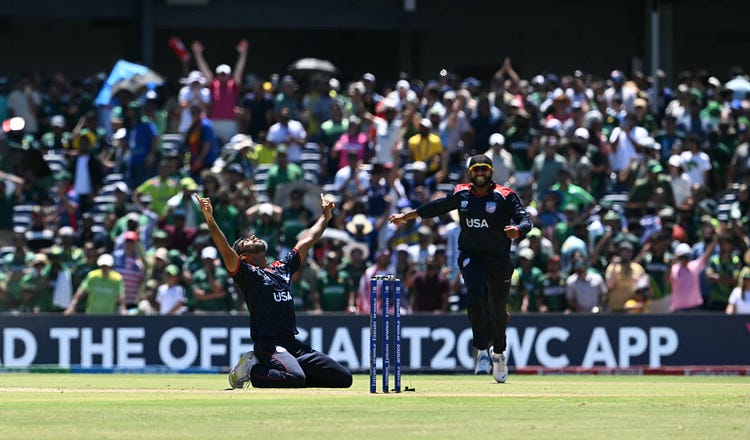Can Cricket Recolonize America?

International cricketer, Oracle software engineer, and American hero Saurabh Netravalkar falls to his knees after the USA clinched victory against Pakistan in Texas on Wednesday. (Photo by Andrew Caballero-REYNOLDS/AFP via Getty Images)
Benjamin Franklin and Abraham Lincoln were fans. As an Englishman in the U.S., I’m rooting for a revival.
322
Tomorrow, New York’s Long Island suburbs will host a game expected to be viewed by twice as many people as the Super Bowl. Most Americans, however, don’t know the rules of the sport being played and would find it impossible to follow—unless they were watching with a very patient friend from England, or India, or Australia.
I am talking, of course, about…
Continue Reading The Free Press
To support our journalism, and unlock all of our investigative stories and provocative commentary about the world as it actually is, subscribe below.
$8.33/month
Billed as $100 yearly
$10/month
Billed as $10 monthly
Already have an account?
Sign In


